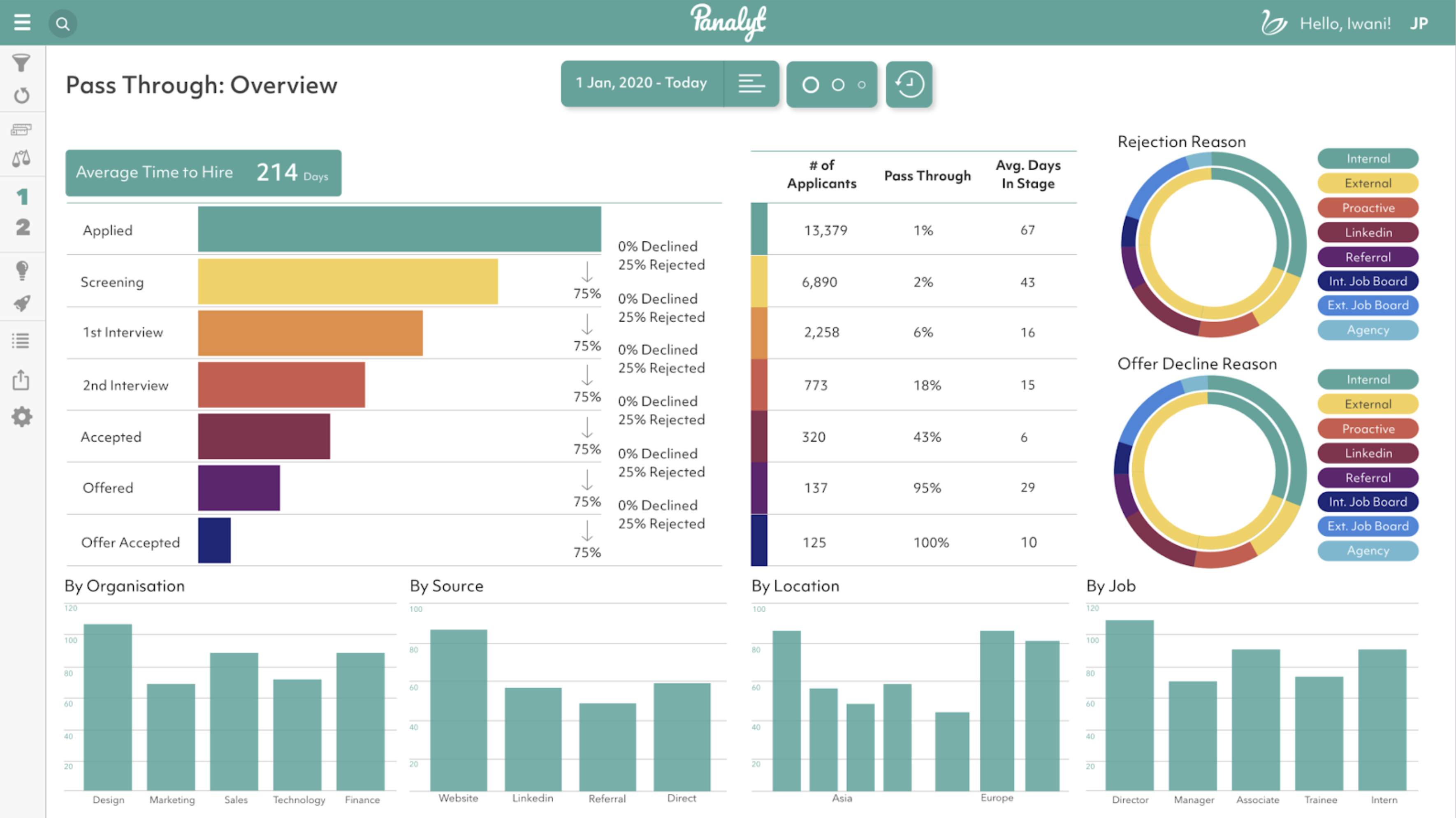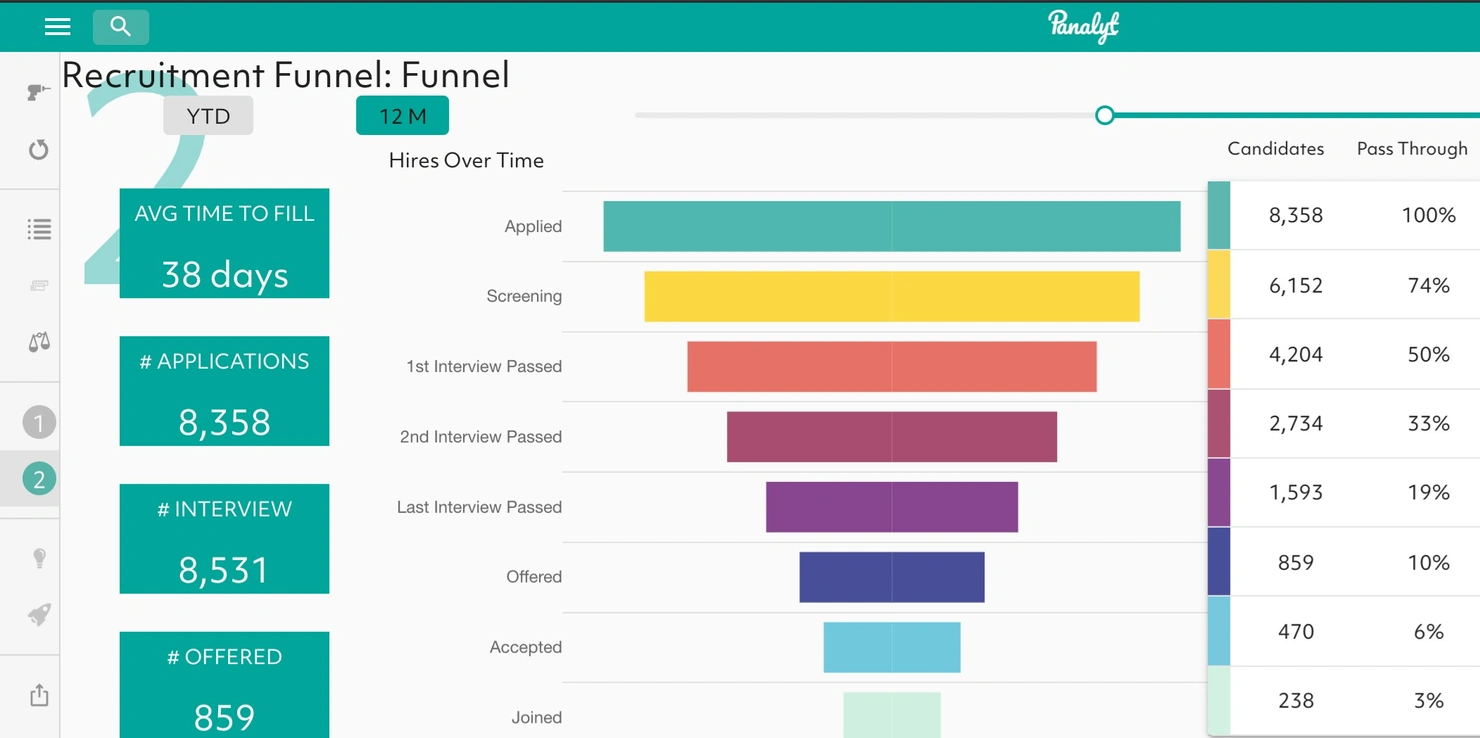A Data-Driven Approach To Optimise Your Recruitment Process and Improve Your Candidate Experience

The influx of venture capital has led to an exponential rise in companies scaling rapidly and the recruitment function has had to adapt accordingly, especially for technology roles.
In today’s world where job-changing has become the norm amongst millennials who are being lured by paychecks and perks that get more extravagant by the day, it has become important for companies to optimize their recruitment process.
The days when a candidate would spend months waiting to hear back from their dream company are long gone. Improving the candidate experience through actionable analytics should be a key focus area for companies looking to hire high-quality talent.

As a co-founder at Panalyt, I’ve had the opportunity to work with ultra-high growth APAC unicorns in the past two years such as Mercari, Circles.Life, aCommerce, SmartNews, Sansan, Plaid and Careem to to improve their recruitment process and the candidate experience through analytics. I also consulted for the MENA e-commerce giant Noon.com at a time when their headcount went from 300 to 2500 in 2 months following a billion dollar investment in 2017.
I believe recruitment teams can benefit from drawing parallels between optimizing the candidate experience and the work done by their counterparts in growth/ product/ marketing teams to optimize the user experience and improve the recruitment process through data-driven experiments.
Here are a few tips from my experience on how you can use recruitment analytics to optimize your recruitment process and improve your candidate experience.
Attract More Candidates
A/B test your job openings (in fact everything that you can)- experiment with different job postings, job ads, channels, referral incentives etc. This will help you continually improve your postings, understand which groups of people are attracted to certain variants and expand your reach.
Measure your channel effectiveness — know how much you’re spending on each hiring channel and the volume of candidates and hires coming through that channel. Consequently, measure your cost per hire per channel and use this to optimise your spend and maximise your recruitment budget.

Your database of past candidates is a gold mine of prospects for future job openings, and you can use programmatic candidate retargeting to bring older candidates back into your interview process.
You should map jobs to skills and experience levels, identify related jobs, and understand the skills of your candidates and employees. This can help you find older candidates who might be a good fit for a role different from the one they originally applied for along with optimising internal mobility.
Increase Candidate Engagement
Invest in a Talent CRM or build your own automated process to engage with candidates through integrations with your ATS. Ideally you’d want a specialised tool like Beamery, but you can get a lot done through Zapier integrations with MailChimp as well.

Add your prospective candidates to a mailing list to keep them engaged. Spaced repetition can help keep your candidates actively engaged with you.(This article by Quartz explains the Ebinghaus Forgetting Curve very well)

Optimise The Interview Process
Drill down into your recruitment funnel to measure metrics such as Time to Hire, Time to Reject, Average Time Spent Per Stage, Passthrough Rate by Stage etc. broken down across different roles, divisions and locations. Use benchmarks from your own historic recruitment data and external market data, to set realistic expectations and achievable KPIs.
Identify bottlenecks in your hiring funnel and investigate the cause for the same.
Are your hiring managers rejecting low quality candidates sent by a recruiter?
Was the recruiter given an inadequate ideal candidate profile/ job description?
Are candidates being rejected in later technical/ cultural rounds after the first post-recruiter interview?
Are candidates dropping off themselves due to a sub-par interview experience?

Fix your process in the steps before the bottleneck. Integrating your ATS with a survey tool like Survey Monkey or TypeForm can help you run experience surveys that gather feedback from the different stakeholders( candidate, recruiter, hiring manager) involved in different steps of the hiring process and build up a culture of continuous improvement.
Measure the effectiveness of any third party tool that you use to automate your hiring process. An easy way to do this is to see the number of rejections in the stage immediately after the automated step.
Focus on the Quality of Hire
Syncing your recruitment candidate data with your employee performance, engagement and attrition data allows you to assess the quality of hires made by your hiring teams.
Identify the hiring managers who hire high performing talent– usually 90% of your top hires come from 10% of the hiring manager pool- and recognise/ reward them for the same. Hiring managers continually making low quality hires should be replaced if possible and run through training programs to develop their candidate selection skills.

Keeping structured and consistent recruitment scorecards allows you to identify which candidates are showing traits similar to previous high performing hires in similar roles, along with making it easier to come on a consensus on a decision.
Using the Quality of Hire as the primary metric for rewarding referrals ensures you are getting high quality talent in through referrals.
Identify and Remove Biases From Your Hiring Process
An easy way to identify biases in your recruitment process is to segment the funnel by different demographic groups, compare the funnel conversion metrics for each group to find where certain groups are dropping off and then identify and fix the underlying issues.
Ensuring candidates are scored and compared based on unbiased criteria in the recruitment scorecards used by stakeholders throughout the process also helps keep the process impartial.
I hope you can takeaway some of the concepts discussed here and apply them to improve your current recruitment process. Remember, the success of any people analytics project depends on ensuring your data is structured properly for advanced analytics!
Feel free to contact me at yusuf@panalyt.com if you would like to discuss recruitment analytics in further detail!
About Panalyt
Panalyt bridges the People-Data Gap, enabling real-time, uniform access to relevant people data, reports, and insights for CxOs, HR, and business managers.
People data, including employee interactions and connections, is combined with business data empowering businesses to leapfrog to data-driven decision making, eliminating bias and improving engagement, sales effectiveness, productivity, and, as a result, business performance.
Interested in a further discussion on how People Analytics and Relational Analytics can help you drive an improved employee and business outcomes? Book a 30-minute discovery call with our Panalyt co-founders to learn more!







